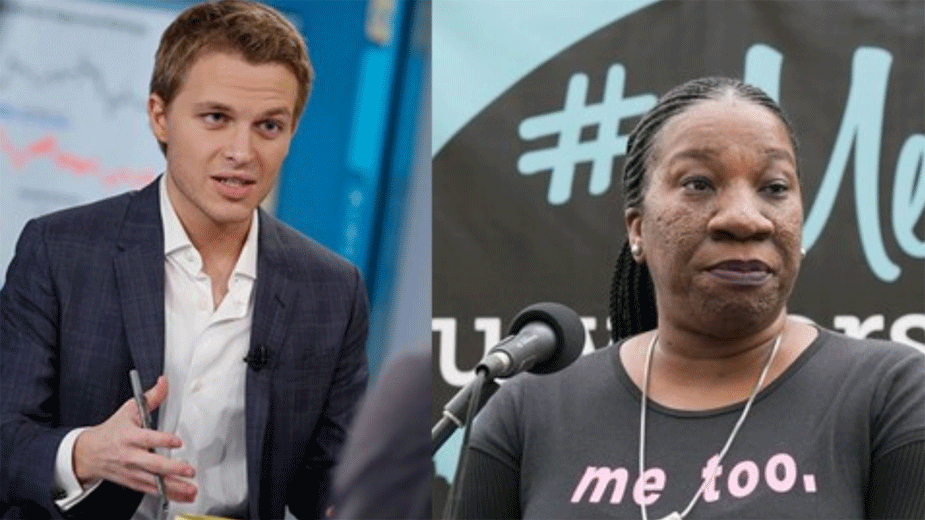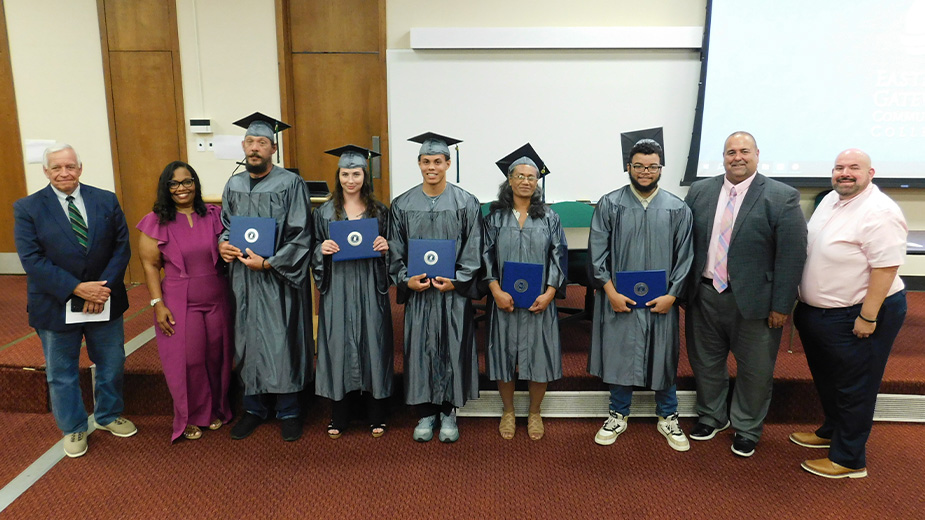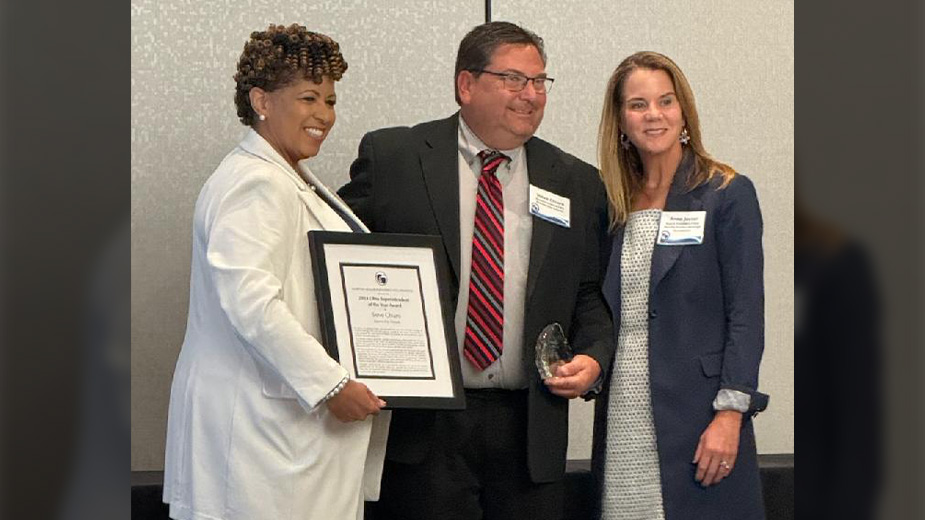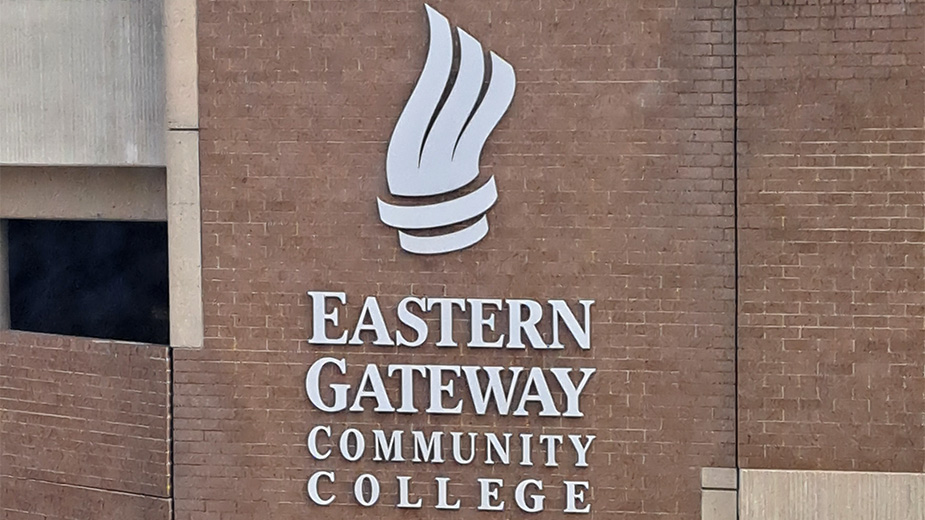Farrow, #MeToo Founder Shine Light on Sexual Abuse
YOUNGSTOWN, Ohio – Rape, sexual harassment and other criminal behavior drew a large audience to Stambaugh Auditorium Wednesday night to hear reporter Ronan Farrow and the woman behind #MeToo, Tarana Burke, tell of the strides made to date and work to be done in stopping such behavior.
Rape and sexual harassment are not limited to women, the pair noted. Males are coming forward too in relating how they’ve been victims. Roughly “one in six are boys,” Burke said. The people least likely to speak out live “in a community of color,” she said, where their culture reinforces the shame of victimhood and its members find it hardest to break their silence.
Farrow is the young reporter who broke the story in The New Yorker last fall of the sexual predations of former Hollywood mogul Harvey Weinstein. Burke is one of the “Silence Breakers” Time magazine recognized as its Person of the Year for 2017.
Youngstown State University featured them as the speakers at this year’s Centofanti Symposium.
They walked on stage to rousing applause and most of their answers to the moderator Joseph Mosca’s questions drew more applause. Mosca is dean of the Bitonte College of Health and Human Services.
Mosca and the audience wanted to learn about the role of the media in uncovering what Hollywood had long known about Weinstein and its role in, if not ending sexual predation, making it much harder for those who prey on women and juveniles to escape notice.
As he listened to the accounts of Weinstein’s victims, Farrow found that most wanted others to know what had happened but feared they wouldn’t be believed or heard. “A common theme of victims is their fear they won’t be heard.”
They believe it futile to go public. Farrow did not push any to go on the record, he said, unless they were ready to do so and had informed members of their family about their intent. His reporting required considerable time and patience as many wavered and some changed their minds after saying they would go on the record.
“I tell women, ‘You won’t be facing this alone,’ “ he said. “ ‘If you come forward, [another victim] will come forward.’ “
In meeting with YSU students and the press earlier in the afternoon, Farrow said that reporters, especially younger reporters, researched and wrote stories only to submit them to “men of a certain age” who either dismissed their reportage or ignored it. Such editors were clearly uncomfortable with the topic, he said, and praised his immediate editor, a female, and New Yorker editor-in-chief David Remnick for their courage in standing behind him.
“The media landscape has changed for the better,” Farrow said. More victims’ accounts will be heard.
Another reason reportage of sexual harassment and other misbehavior found it hard to make it on the air and in print is the number (and size) of investigative units the mainstream media could fund shrank. That trend has been reversed, Farrow said, helped in part by the rise of publicly funded outlets such as Pro Publica.
“The tradition of old-school shoe-leather journalism is intact,” he said. “Now there is more investigation.”
Burke took a different tack. Her concern is to help victims heal from their experiences. For some, simply telling someone else what befell them can be cathartic. For others, seeing their stories in print or on the air is needed. They want to be believed.
Burke, from The Bronx, New York, went to Selma, Alabama, in 2003 to work with black girls as part of 21st Century Youth Leadership Movement. Early on, she heard them confide in her about “suffering sexual violence,” including one whose mother’s boyfriend was assaulting her.
“I’m not a social worker. I’m not a therapist,” she thought. And Burke learned of a prominent civil rights leader she did not identify who had long been a predator.
She too was thrice a victim of assault, Burke said.
That was the genesis of #MeToo. “#MeToo created a solution,” getting 12 million hits from around the world in the 24 hours after posted it, Burke said.
“The way it’s being characterized in the media is not just wrong,” its founder said, “but detrimental. It’s a movement for and about survival.”
Burke’s work that began in Alabama “was in small pockets,” she said. Victims told her of their “deep shame,” which she worked to help them overcome.
Two questions both Burke and Ronan get – and which neither explained particularly well – is what happened last fall that allowed the exposure of Harvey Weinstein and later his brother, and other well-known American men to be exposed? Some were fired – CBS and PBS’ Charlie Rose, NPR’s Michael Oreskes – and others suspended without pay, such as New York Times reporter Glenn Thrush for his behavior while a reporter at Politico.
Victims had been telling their stories all along, Burke pointed out. What was different last fall was “We just found a frequency where people could hear us. …
“This is one of those watershed moments in time,” Burke concluded.
The second question is where does the movement go from here? Neither Burke nor Ronan believes America will go back to before the summer of 2016. The election of Donald Trump despite the Access Hollywood tapes and the accusations of 17 women – the president threatened to sue them after the election but has not – makes it hard to ignore sexual harassment and charges of rape.
There remains work to be done on college campuses, Burke said, and she will turn her attention to communities of color, black, brown, Hispanic, Asian-American but especially native Americans. The problem is most pronounced there. Native American victims are the forgotten, the most ignored, she said, and have the hardest time telling their stories, being believed and overcoming their shame.
Proportionately, Native-Americans suffer the highest rate of sexual abuse in the United States, she said.
Copyright 2024 The Business Journal, Youngstown, Ohio.



